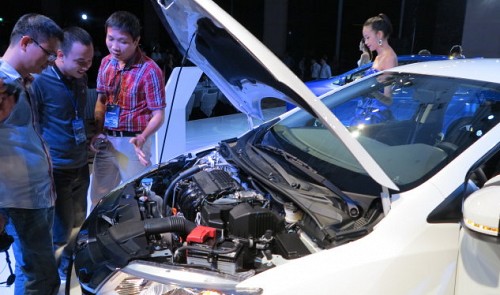ASEAN-made car imports to Vietnam rise sharply over tax cut

Sales of domestically assembled cars in the 17 months only rose 27 percent, while imported cars posted a 66 percent growth in the same period, according to the VAMA.
Such a huge disparity was also recorded in separate months, the association added.
In July, the growth of imported cars was 62 percent, compared to 24 percent for those assembled in Vietnam. The figures were 73 percent compared to 23 percent in May.
Cars manufactured in ASEAN countries account for a considerable amount of the vehicles sold by VAMA businesses, as they are subject to a 50 percent import duty, instead of the usual 60 percent.
ASEAN is a ten-member bloc which includes such Southeast Asian countries as Indonesia, Malaysia, the Philippines, Singapore, Thailand, Brunei, Cambodia, Laos, Myanmar, and Vietnam.
Ford Vietnam sold 1,287 cars in August, 394 of which were imported from Thailand, according to VAMA. Similarly, 423 out of the 3,615 units Toyota Vietnam sold in the same month were manufactured in Thailand.
The VAMA businesses only sell made-in-Thailand pick-up trucks, as the vehicles are only subject to a 5 percent import duty.
Vietnam imported more than 7,400 cars from Thailand in the Jan-Aug period, compared to 745 units from India, according to data from the General Department of Vietnam Customs.
Some Vietnamese carmakers admitted that they mostly import cars from Thailand and Indonesia, where the automobile industries are highly developed.
Vietnam imported 44,000 cars, worth $938 million, in the year to September, a 74 percent increase in volume and 90.2 percent rise in value compared to the same period last year, according to the General Statistics Office of Vietnam.
Passenger cars with fewer than 24 seats, 40 percent of whose parts are manufactured by ASEAN countries, are currently subject to a 50 percent import duty. The rate will be lowered to zero in 2018, under the Common Effective Preferential Tariff agreement.
Industry insiders say it is more profitable to sell imported cars than those that are domestically assembled.
Kazuhiro Yamana, general director of Vinastar, said three out of the four models his company sells are imported from Thailand, while the remaining line is assembled in the southern province of Binh Duong.
Vinastar is poised to introduce two new products, the Attrage and Outlander Sport, to Vietnam this year, but they will also be imported from Thailand and Japan, Kazuhiro said.
Tomohiro Maruno, director of sales of Honda Vietnam, also said automobile businesses would rather import cars than manufacture them here.
Cars manufactured or assembled in Vietnam are much costlier than the same products made in Thailand, because they are only made in small volumes, and most of the spare parts must be imported, Tomohiro said.
Maruno said Vietnam must have a specific program to assist local automakers, as they alone cannot narrow the huge price gap between Vietnam-made cars and those produced in other ASEAN countries.
What the stars mean:
★ Poor ★ ★ Promising ★★★ Good ★★★★ Very good ★★★★★ Exceptional
Related Contents
Latest News
More News
- Businesses ramp up production as year-end orders surge (December 30, 2025 | 10:05)
- Vietjet chairwoman awarded Labour Hero title (December 29, 2025 | 13:06)
- How to unlock ESG value through green innovation (December 29, 2025 | 10:03)
- AI reshapes media and advertising industry (December 29, 2025 | 08:33)
- FPT and GELEX sign deal to develop blockchain tech for global markets (December 29, 2025 | 08:29)
- Vietnam’s GDP forecast to grow by 9 per cent in 2026 (December 29, 2025 | 08:29)
- Women entrepreneurs are key to Vietnam’s economic growth (December 29, 2025 | 08:00)
- Vietnam's top 500 value-creating enterprises announced (December 27, 2025 | 08:00)
- The PAN Group shaping a better future with ESG strategy (December 26, 2025 | 09:00)
- Masan Consumer officially lists on HSX, marking the next phase of value creation (December 25, 2025 | 13:20)

 Tag:
Tag:





















 Mobile Version
Mobile Version